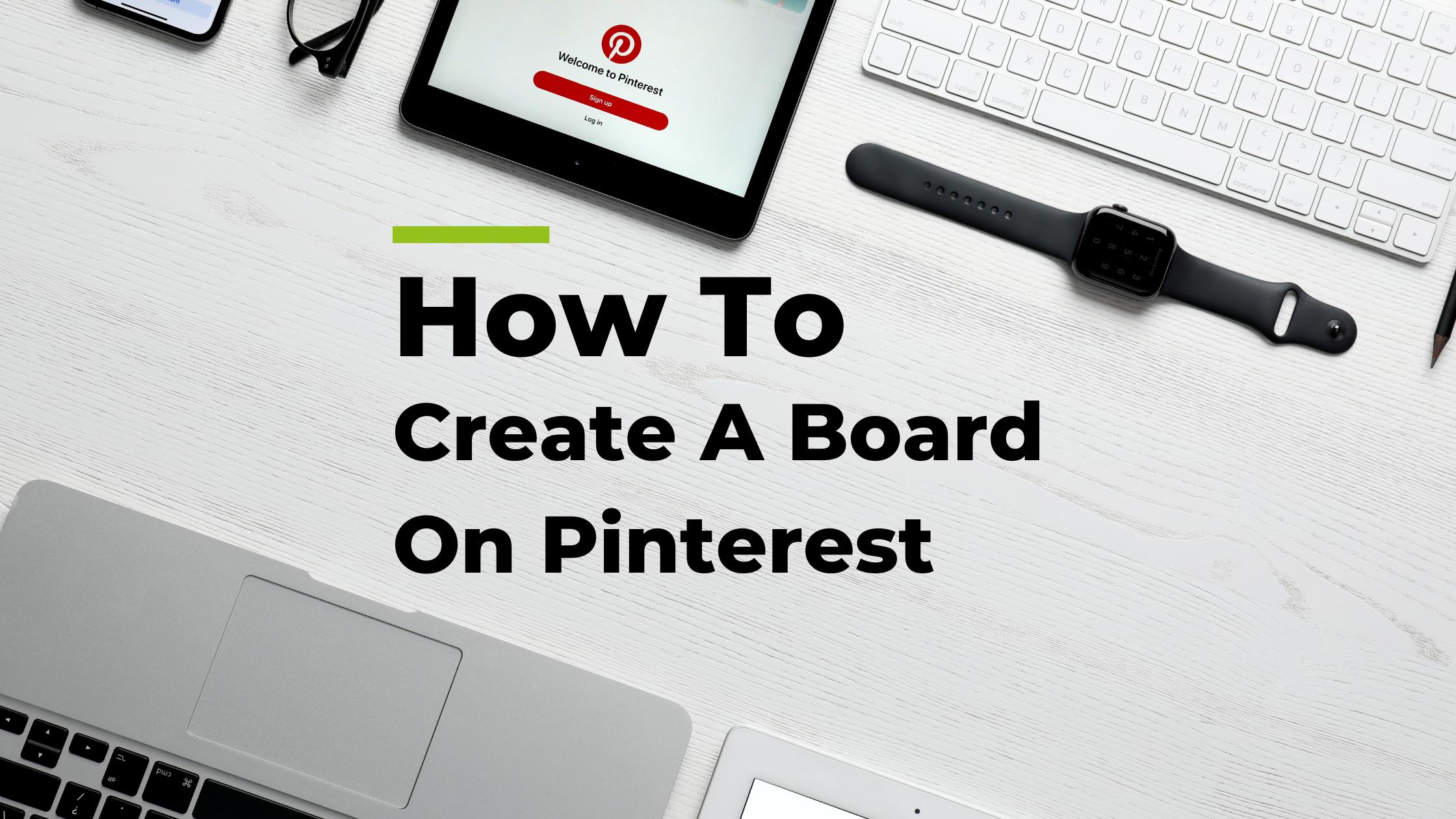Discover how to craft the perfect Pinterest board for your business and skyrocket your online engagement!
Quick Answer:
To create a Pinterest board for business, log into your business account, click ‘Create board’, name it, set privacy, add a description, and choose a category.
Key Takeaways:
- To kickstart your business’s Pinterest marketing, set up a business account for access to analytics and ad tools, and create boards that reflect your brand’s ethos and appeal to your target audience with well-organised, high-quality content.
- Enhance board visibility by using SEO-friendly titles and descriptions, collaborating with influencers on group boards, promoting across other platforms, and engaging with followers to foster community and gain insights.
- Utilise Pinterest analytics to monitor board performance, adjust your content strategy based on user engagement data, and stay abreast of Pinterest trends and best practices to maintain a competitive and effective online presence.
Pinterest is more than just a hub for creative ideas and DIY projects; it’s a powerful marketing tool for businesses looking to expand their reach. By setting up a business account on Pinterest, you unlock a suite of features designed to enhance your brand’s visibility and engagement. Unlike a personal account, a business account provides access to in-depth analytics, a robust ad manager, and the ability to verify your website, which adds credibility to your profile.
Getting Started with Pinterest for Business
Registering Your Business Account on Pinterest
Creating a business account on Pinterest is straightforward. Start by visiting the Pinterest for Business page and click on ‘Join as a Business’. Fill in your business information meticulously. This includes your email address, business name, website, and a secure password. Choose a profile picture that represents your brand, such as your logo, to ensure instant recognition. Your bio should be concise but impactful, reflecting your brand identity and what followers can expect from your content.
Understanding the Pinterest Interface and Terminology
Once your account is set up, familiarise yourself with the Pinterest interface. Key features to focus on include analytics, which helps you track the performance of your pins, and the ad manager, which is essential for running promoted pins campaigns. Understanding terms like ‘pins‘, which are images or videos you share on your profile, ‘boards‘, which are collections of pins, and ‘repins‘, which occur when someone shares your pin to their board, is crucial. These are the building blocks of your Pinterest strategy.
The Significance of Boards in Pinterest Marketing
Boards are at the heart of Pinterest and serve as a strategic tool for content organisation and engaging a targeted audience. They allow you to categorise your content, making it easier for users to find and follow what interests them. Boards can reflect your company ethos, showcase your products, and inspire customers. They are a visual representation of your brand’s narrative and should be curated with care to appeal to your ideal customer.
Creating Your First Pinterest Board
When you’re ready to boost your online presence and harness the power of Pinterest for your business, creating your first board is a pivotal step. A well-crafted Pinterest board can serve as a cornerstone of your marketing effectiveness, drawing in your target audience with a curated collection of images and ideas that represent your brand.
Step-by-Step Instructions for Setting Up a New Board
To get started, follow these steps to create your new board:
- Log into your Pinterest business account.
- Click on the Create board option, usually found in your profile or the ‘+’ button on the bottom right of the screen.
- Give your board a name that aligns with your content and business goals.
- Decide on the board privacy. Public boards are visible to everyone, while secret boards are only for you and whomever you invite.
- Add a description and select a category to help users discover your board.
Each setting is crucial as it dictates how your board aligns with your business goals. Public boards can be used to engage with a wider audience, while secret boards can be a space for internal collaboration and planning.
Crafting a Descriptive and Engaging Board Title
Your board title is the first thing people will see, so make it count:
- Use clear and concise language that tells viewers what your board is about.
- Make sure it’s SEO-friendly to improve its visibility in search results.
- Reflect your target audience‘s interests to draw them in.
For example, a board titled “Eco-Friendly Office Ideas” is direct and appealing to those interested in sustainability.
Selecting the Appropriate Category for Your Board
Choosing the right category is key for discoverability. It helps Pinterest’s algorithm understand what your content is about and who might want to see it. To select the most relevant category:
- Think about your board’s content and the interests of your intended audience.
- Match your board to the category that best fits its theme.
If your board is about home decor, for instance, you’d choose the ‘Home Decor’ category to reach people looking for inspiration in that area.
Designing a Captivating Board Cover Image
A striking cover image can make a strong first impression. It should:
- Be high-quality and visually appealing.
- Represent the board’s theme and your brand aesthetics.
- Be consistent with the rest of your brand imagery.
This image sets the tone for your board and can be the deciding factor for a viewer to follow your board and engage with your content.
Writing an Optimised Board Description with Keywords
An effective board description is more than just informative; it’s a tool for improving your board’s SEO. Here’s how to craft a description that works:
- Include keywords that relate to your business, products, or services.
- Write naturally and conversationally, as if explaining the board to a friend.
- Keep it brief but descriptive enough to inform viewers about what they’ll find on your board.
For example, if your board is about artisanal coffee, use keywords like ‘specialty coffee beans’ or ‘handcrafted coffee accessories’.
By following these guidelines, you’ll be well on your way to creating a Pinterest board that not only looks great but also aligns with your business objectives and reaches the right audience.
Curating and Organising Content
A Pinterest board brimming with well-chosen pins can captivate an audience and convey your brand message with clarity. The content curation process is pivotal in shaping how your audience interacts with your board. Thoughtful selection and arrangement of pins can significantly boost engagement and ensure your board tells a compelling story.
The Art of Pinning: Adding Pins to Your Board
Adding pins to your board is more than just a click; it’s about creating a visual narrative for your brand. Here’s how to enrich your boards:
- To add a pin, click the ‘+’ button on your board or use the ‘Save’ button from a website.
- When repinning, choose pins that align with your brand’s aesthetic and values.
- For original content, ensure images are high-quality and the optimal size—typically a 2:3 ratio works best.
- Craft detailed descriptions for each pin, incorporating relevant keywords without sacrificing readability.
Remember, each pin is a piece of the puzzle that forms the bigger picture of your brand.
Sourcing and Creating Visually Appealing Content
The content you choose should resonate with your audience and mirror your visual identity. Here’s how to source and create content that stands out:
- Use design tools like Canva or Adobe Spark to create custom images that fit your brand’s style.
- Keep a consistent style across your pins, using similar filters, colours, and typography.
- Explore Pinterest itself for inspiration, paying attention to what’s popular in your niche.
Your content should not only look good but also speak volumes about what your brand stands for.
Organising Pins for Maximum User Engagement
A well-organised board can enhance the user experience and encourage deeper exploration. To organise your pins effectively:
- Place your most striking pins at the top of your board to make a strong first impression.
- Consider creating board sections to categorise your content, making it easier for users to navigate.
- Regularly refresh your board with new pins and rotate older content to keep things fresh and engaging.
An organised board is like a well-kept shop window—it invites people in and encourages them to browse.
Utilising Rich Pins for More Dynamic Content
Rich Pins provide more context by automatically including additional information from your website. They come in different types, such as Product Pins, Recipe Pins, and Article Pins. To get started with Rich Pins:
- Ensure your website is equipped with the necessary metadata for the type of Rich Pin you want to use.
- Apply for Rich Pins through Pinterest’s validation process.
- Once approved, all your pins from that domain will include the extra details, making them more informative and actionable.
Rich Pins can elevate your Pinterest presence, offering a more immersive experience for your audience.
By curating and organising your content with care, and utilising the full range of tools Pinterest offers, you can create boards that not only look great but also work hard to achieve your business objectives. Whether it’s through eye-catching visuals, strategic organisation, or dynamic Rich Pins, your Pinterest boards have the potential to be a powerful asset in your marketing toolkit.
Enhancing Board Visibility and Engagement
Boosting your Pinterest board’s visibility and fostering engagement are key to connecting with your target audience. By using Pinterest analytics to track performance and actively participating in the Pinterest community, you can refine your approach and grow your following.
Strategies for SEO and Keyword Optimisation on Pinterest
Optimising your Pinterest content for search engines is a game-changer. Here’s how to make SEO work for you:
- Incorporate relevant keywords in your board titles and descriptions to improve searchability.
- Use keywords naturally in your pin captions without compromising readability.
- Research trending keywords and phrases related to your industry to stay ahead.
Effective SEO practices can significantly increase your board’s visibility, attracting more followers and potential customers.
Collaborating with Influencers and Brands on Group Boards
Joining forces with influencers and other brands can amplify your content’s reach. Consider these steps for successful collaborations:
- Identify influencers and brands that share your values and have an engaged audience.
- Reach out with a clear proposal that outlines the benefits of working together.
- Create group boards where both parties can pin content, exposing each other’s followers to new brands and ideas.
Collaborations can extend your content’s reach and introduce your brand to new audiences.
Promoting Your Boards Through Cross-Platform Marketing
Integrating your Pinterest boards into your overall marketing strategy can create a cohesive brand experience. Here’s how to promote your boards across different channels:
- Share your Pinterest content on other social media platforms with links back to your boards.
- Include your Pinterest boards in your email marketing campaigns to drive traffic.
- Ensure your messaging is consistent across all platforms to reinforce your brand message.
Cross-platform marketing can lead to increased board visibility and engagement.
Engaging with Followers and Analysing Their Feedback
Building relationships with your followers is crucial for engagement. Here are some ways to connect:
- Respond to comments and messages promptly to show that you value your audience’s input.
- Encourage followers to share their thoughts and ideas to foster a sense of community.
- Use feedback analysis to understand what content resonates with your audience and adjust your strategy accordingly.
Engaging with your followers can provide valuable insights into their preferences, helping you to tailor your content and grow your Pinterest presence.
Monitoring and Refining Your Pinterest Strategy
To ensure your Pinterest presence is not just a shot in the dark, regular analysis of your Pinterest analytics is essential. It’s the compass that guides your content review and shapes your marketing strategies. By understanding what resonates with your audience, you can fine-tune your approach to maximise engagement and reach.
Using Pinterest Analytics to Track Board Performance
Pinterest analytics is a treasure trove of data that provides insights into how your boards and pins perform. Key metrics to monitor include:
- Impressions: The number of times your pins have been seen. This gives you an idea of your content’s reach.
- Clicks: How often users click through to your linked website. This is a strong indicator of traffic generation.
- Saves: The number of times people have saved your pins to their boards, which can amplify your content’s visibility.
To access these metrics, go to your Pinterest business account and click on ‘Analytics’. Here, you’ll find a dashboard that breaks down the performance of your content.
Adjusting Your Content Strategy Based on Analytics Insights
Analytics can tell you a lot about what’s working and what’s not. Use these insights to adjust your content strategy:
- If certain pins are getting more impressions, consider creating more content with a similar style or theme.
- Analyse the times when your pins receive the most engagement and schedule your posts accordingly.
- Pay attention to the pins with high saves and clicks to understand what drives user action.
These adjustments can lead to a more effective Pinterest presence and a stronger connection with your audience.
Staying Up-to-Date with Pinterest Trends and Best Practices
The digital landscape is ever-changing, and so are the trends on Pinterest. To maintain a competitive edge, it’s crucial to stay informed about:
- The latest Pinterest trends that could influence user interests and behaviours.
- Updates to the Pinterest algorithm that might affect how your content is displayed.
- Resources for continuous learning, such as Pinterest’s own business blog or marketing webinars.
By keeping your finger on the pulse of Pinterest’s evolving platform, you can adapt your strategy to stay ahead of the curve.
Regularly monitoring and refining your Pinterest strategy is not just about keeping up with the numbers; it’s about understanding the story they tell. This ongoing process will help you create more impactful content that aligns with your business objectives and resonates with your target audience.
Frequently Asked Questions
Question 1: How can I measure the ROI of my Pinterest boards for business purposes?
Answer: Track conversions from pins to sales using Pinterest analytics and UTM parameters on your linked website.
Question 2: What are the best practices for using hashtags on Pinterest business boards?
Answer: Use relevant, specific hashtags sparingly and strategically to improve content discoverability.
Question 3: Can I schedule pins in advance on Pinterest, and if so, how?
Answer: Yes, use Pinterest’s native scheduler or third-party tools like Tailwind to plan your pins.
Question 4: How often should I update my Pinterest boards to maintain engagement?
Answer: Regularly add fresh content and update existing pins, aiming for several times a week.
Question 5: What’s the ideal number of boards a business should maintain on Pinterest?
Answer: Focus on quality over quantity; start with a few well-curated boards and expand as needed.
How can Bright Sprout help?
Whether you’d like an expert to run your Pinterest and other social media accounts, or training on how to maximise your platforms, we’ve got you covered.
Our packages are always based upon your specific requirements so that you are never paying for something you don’t need.
If you’re ready to take your social presence to the next level, fill in our contact form.


